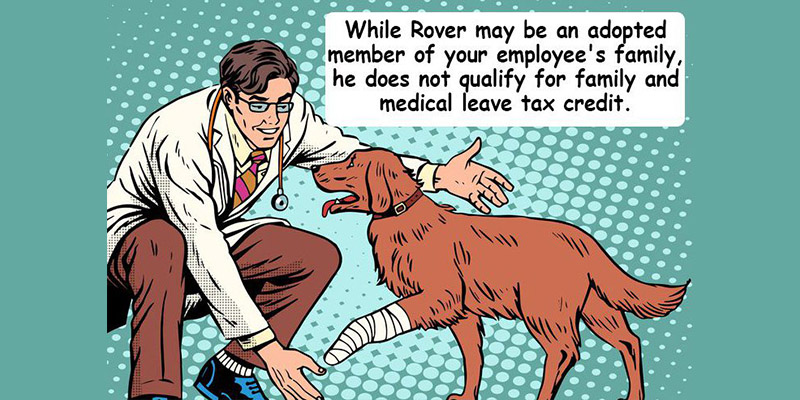The Social Security Administration has announced that they will begin mailing Educational Correspondence (EDCOR) notices in the middle of next year to businesses and employers who submit wage and tax statements (Form W-2) that contain name and Social Security number (SSN) combinations that do not match their records. There are a number of reasons why reported names and SSNs may not agree with their records, such as typographical errors, unreported name changes, and inaccurate or incomplete employer records. If they cannot match the name and SSN reported on a Form W-2 to their records, they cannot reconcile employer wage reports and…
Posts published in “Payroll”
While I am biased, as President of PayMaster, a payroll service provider, I do find the rare case for a business to utilize the services of a Professional Employer Organization (PEO) or Employee Leasing as it is sometimes referred to. In my opinion, there are only two reasons for a business to utilize a PEO, and that is in regards to Health insurance and Workers’ Compensation insurance as we will discuss. If the PEO route is the decision then I strongly recommend proceeding with caution and do your math, taking into consideration the big picture of the financial cost. This not…
This past week, voters in Washington, D.C. elected to raise the minimum wage for tipped workers to minimum wage by passing Initiative 77. Wait aren’t they already receiving minimum wage? Sort of. While the federal minimum wage is $7.25 per hour, the minimum wage for an employee who receives at least $30 per month in tips is only $2.13 an hour. This does not mean that an employee who works a 40 hour week is only going home with less than $100 gross. The employee is expected to receive tips that bring them up to the regular minimum wage, and should that…
According to the Society for Human Resource Management (SHRM), nine out of ten employers conduct background screening on candidates when hiring. It’s clear employers want to make safe hiring decisions. This is even more important because of the growing number of American workers that have a criminal history. In fact, the Bureau of Justice reports that almost one-third of working Americans have a criminal history on file — and this number is continuing to rise. Given these statistics, it’s inevitable you’ll find a candidate with criminal history when conducting background screening. Some risk-averse employers may make the common mistake of…
The Credit For Portion Of Employer Social Security Paid With Respect To Employee Cash Tips, or Excess FICA Tax Credit on Tips, for short, to be exact. If you are familiar with this tax credit, then congratulations, you are one of the few (just be sure you are not a victim to the ‘Confusions’ I point out below). The IRS recently reported that for tax 2012 (yeah, it takes them this long to report), 66,400 taxpayers took advantage of this credit. This quantity seemed underwhelming to me, so I did some research as to how many businesses were potential candidates. …
We carry health insurance for routine ‘maintenance’ and unforeseen events, auto and home insurance for unexpected property losses, but what about protection and assistance with the day to day situations that could require legal assistance? Review of an agreement or contract ♦ securing a mortgage ♦ collecting or settling a debt ♦ credit report issues ♦ probate ♦ bankruptcy ♦ immigration ♦ divorce ♦ preparing a will ♦ traffic citation ♦ marriage ♦ purchasing faulty merchandise/consumer protection ♦ notary services ♦ these are all situations where having an attorney would be of great value, but sometimes the cost can be discouraging from having the much needed legal assistance. Studies have shown that 7 out of 10 people have experienced some sort of legal event in…
When the Tax Cuts and Jobs Act was signed into law back in December 2017, it included Section 45S to the IRS Code which includes a credit for employers who pay for family and medical leave. The credit is a percentage of the amount of wages paid to a qualifying employee while on leave for up to 12 weeks per taxable year. The minimum percentage is 12.5% and is increased by .25% for each percentage point by which the amount paid to a qualifying employee exceeds 50% of the employee’s wages, with a maximum credit of 25% (for employers that…
A question I am often asked is ‘How long must I maintain my payroll records?’, and the answer is; “it depends”. Reason being is that there are many different documents that are maintained within the payroll world by a myriad of federal, state, and local agencies, and a lots of overlap. Some people put a blanket retention policy of seven years across all documents, but in some cases as we will see, even that may not be long enough. Namely if the records are for an active employee. Let’s take a look at the more popular forms and documents, and bring some order to…
E-Verify started as a pilot program in 1997 to help employers verify the work authorization of new hires. When you have an employee complete a USCIS Form I-9, you are taking the word of the employee and the face value of the documents they provide. E-Verify allows you to confirm the provided documentation against multiple government databases. All employers must first complete an I-9 form for every new hire, within three business days of the date the employee starts work. Employers must not begin the I-9 process until after the individual is hired. The newly-hired employee jointly completes the I-9 form…
All private employers, even Old MacDonald, who are subject to Title VII of the Civil Rights Act of 1964 (as amended by the EEO Act of 1972) with 100 or more employees and have establishments located in the 50 states or DC are required to file the Standard Form 100 (aka EEO-1) on or before March 31st of each year. This includes state and local governments, primary and secondary school systems, institutions of higher education, Indian tribes, and tax-exempt private membership clubs other than labor organizations. Companies with centralized ownership, control, or management count all employees across all organizations to…










